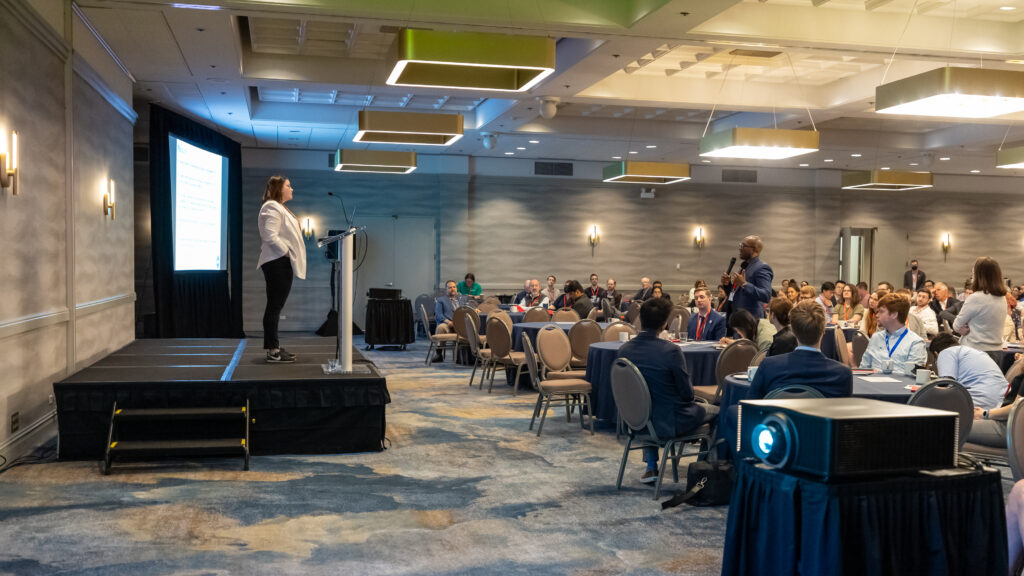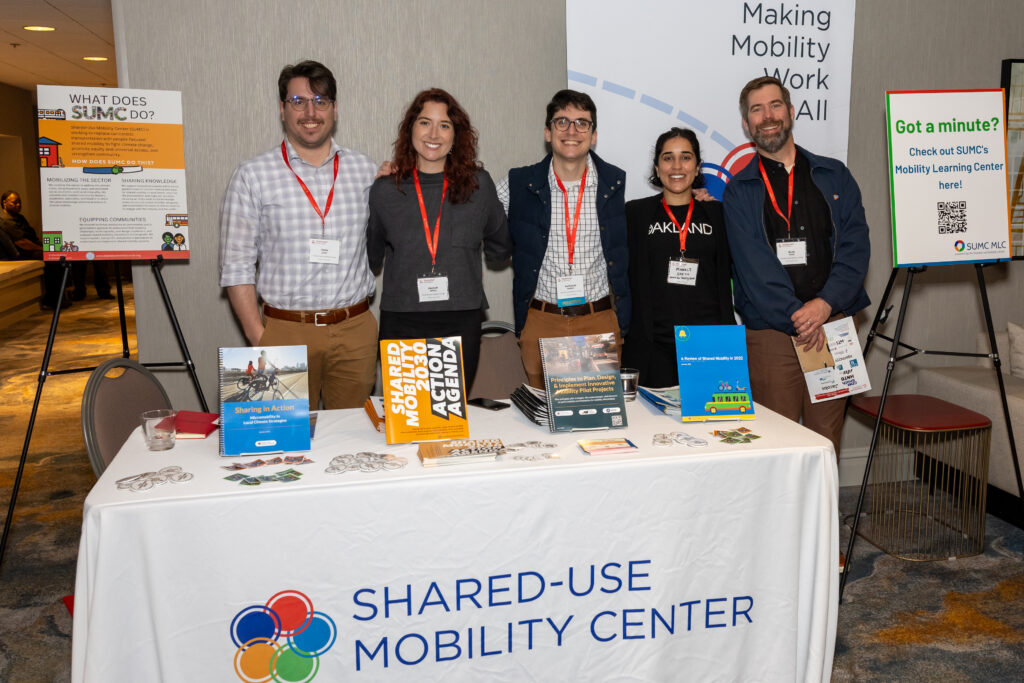Event Recap: Transport Chicago, June 2023
By Nate Seeskin
Jul 19, 2023
Revised March 2025
Knowledge sharing is core to the mission of the Mobility Innovation Collaborative and the Shared-Use Mobility Center. Part of this work involves presenting our research and tools at different events. On June 16, 2023, SUMC Program Coordinator Nate Seeskin presented an overview of The Path to Mobility Interoperability, alongside other panelists in a session titled Looking in the Toolkit: Methods for Transportation Planning, at the 35th Transport Chicago. Transport Chicago is an annual conference for transportation professionals in the Chicagoland region, holding various sessions and presentations on a wide array of topics, including transit, shared mobility, infrastructure, Vision Zero, electrification, bike and pedestrian safety, and commuter and freight train services, among others.
Keynote speakers at the conference included Molly Poppe, Chief Innovation Officer at the Chicago Transit Authority, and Monali Shah, Head of Transportation Solutions at Google and board chair at ITS America. Both of these speakers spoke to the value of innovation in shared mobility and public transit–innovation need not always require sweeping changes to mobility services, but more so policy and technological changes sensitive to the needs of communities.

In the breakout session, Looking in the Toolkit: Methods for Transportation Planning, panelists alongside Nate included Sarah Edwards from Cook County, Jane Wilberding from HNTB, and Anton Rozhkov from the University of Illinois Chicago. Nate discussed The Path to Mobility Interoperability, a tool informed and supported by agencies participating in a working group formed under the Mobility Innovation Collaborative. The tool is a logic model that outlines how mobility providers can implement and maintain interoperability solutions, such as adopting open-source data specifications like the General Transit Feed Specification (GTFS). In a broader sense, mobility data interoperability can be defined as “[t]he ability for any mobility technology component to exchange at an open standard or schema with other components in that mobility technology system”. [1]

Using a hypothetical scenario of a small transit agency looking to improve interoperability, Nate explored the five steps of the logic model listed below with an agency exploring the adoption of the General Transit Feed Specification (GTFS):
- Set Goals: The transit agency recognizes a need better to relay bus routes and scheduling info to its customers.
- Identify needs: The agency wants to adopt GTFS.
- Fill gaps: The agency procures hardware, software, and consultants to support the GTFS.
- Implement data standards and elements: The transit agency deploys the GTFS.
- Continued management and maintenance: The agency updates feeds as routes and schedules change.
Through feedback and discussion during the Q&A session, audience members offered reflections and other considerations for the mobility interoperability logic model:
- Interagency collaboration: For a mobility system to be truly interoperable, mobility agencies and providers across a region must cooperate to ensure customers can discover and swiftly transfer between different transportation services. Frequently, interagency cooperation is difficult due to factors like geographic locations within a region, political contexts, and funding.
- Supplementing institutional knowledge with external partners: Implementing mobility data interoperability solutions commonly requires institutional expertise within and across agencies; the people implementing mobility as a service (MaaS) or certain data specifications must be comfortable with the ins and outs of existing mobility services. At the same time, agencies should consider what resources, vendors, and products are available. A large ecosystem of private and non-profit partners participate in the mobility interoperability space and can assist agencies with these efforts.
- The mobility interoperability logic model can and should evolve: New information, technology, and innovations frequently emerge in the shared mobility space.

As shared mobility evolves, this tool can grow as well. People from across the mobility industry can provide input on the interoperability logic model by e-mailing policies@sharedusemobilitycenter.org.
Reference:
- Mobility Data Interoperability Principles: ‘Definitions’. https://www.interoperablemobility.org/definitions/#interoperability. Accessed July 19, 2023.